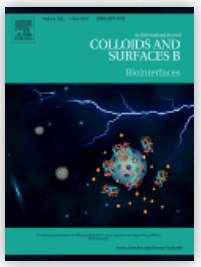Abstract Though the cytotoxic properties of magnetite nanoparticles (NPs) are rather well investigated and known to be dose dependent and rather low, surface functionalization can drastically change their properties. To determine whether the cytotoxicity of magnetite/Ag/antibiotic NPs may be associated, among other things, with iron, silver and antibiotic release, this study investigates the release profiles and cytotoxicity of magnetite/Ag/rifampicin and magnetite/Ag/doxycycline NPs compares it similar profiles from magnetite, magnetite/Ag NPs and antibiotics. It was established that the studied NPs released not only water-soluble substances, such as antibiotics, but also poorly-soluble ones, such as iron and silver. The deposition of silver on the magnetite surface promotes the release of iron by the formation of a galvanic couple. Antibiotic adsorbed on the magnetite/Ag surface plays a dual role in the galvanic corrosion processes: as a corrosion inhibitor for iron oxides and as a corrosion promoter for silver. Magnetite/Ag/rifampicin and magnetite/Ag/doxycycline. NPs were found to have greater cytotoxicity towards the HEK293T cell line than magnetite NPs. These results were attributed to the combined toxic action of the released iron, silver ions and antibiotics. Intensive and simultaneous release of the NP components caused cell stress and suppressed their growth.

